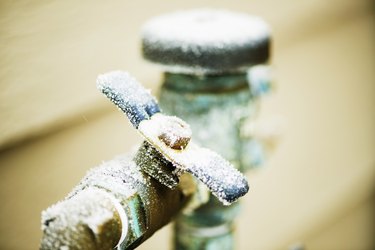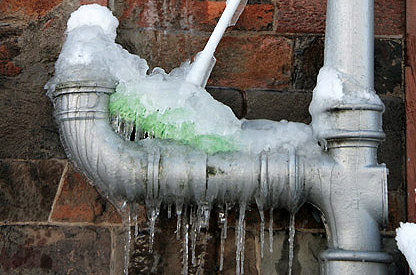Ways to Protect Pipes from Cold Weather: Expert Guidance
Ways to Protect Pipes from Cold Weather: Expert Guidance
Blog Article
Were you hunting for information and facts concerning Winter Plumbing Precautions: Preventing Frozen Pipes?

Winter can wreak havoc on your plumbing, especially by freezing pipelines. Below's exactly how to avoid it from happening and what to do if it does.
Intro
As temperatures decline, the threat of frozen pipelines boosts, possibly bring about costly fixings and water damage. Recognizing how to stop frozen pipes is essential for home owners in cool environments.
Prevention Tips
Insulating vulnerable pipelines
Cover pipes in insulation sleeves or utilize heat tape to shield them from freezing temperatures. Concentrate on pipes in unheated or exterior locations of the home.
Home heating techniques
Maintain indoor areas appropriately heated up, especially areas with plumbing. Open up closet doors to enable warm air to circulate around pipes under sinks.
Just how to recognize frozen pipelines
Seek decreased water circulation from taps, uncommon smells or sounds from pipelines, and visible frost on revealed pipelines.
Long-Term Solutions
Structural modifications
Take into consideration rerouting pipes far from exterior wall surfaces or unheated locations. Add extra insulation to attics, basements, and crawl spaces.
Upgrading insulation
Invest in high-grade insulation for pipelines, attics, and walls. Appropriate insulation helps preserve regular temperature levels and reduces the threat of frozen pipes.
Safeguarding Outdoor Plumbing
Yard pipes and exterior faucets
Disconnect and drain garden tubes before wintertime. Set up frost-proof faucets or cover outside taps with insulated caps.
Comprehending Icy Pipelines
What creates pipes to ice up?
Pipes freeze when revealed to temperatures below 32 ° F (0 ° C) for prolonged durations. As water inside the pipes freezes, it expands, taxing the pipeline walls and possibly creating them to rupture.
Threats and problems
Frozen pipes can lead to water disruptions, building damage, and expensive repairs. Ruptured pipes can flooding homes and trigger comprehensive structural damage.
Signs of Frozen Piping
Recognizing icy pipes early can stop them from bursting.
What to Do If Your Pipes Freeze
Immediate actions to take
If you suspect icy pipes, keep taps open up to soothe stress as the ice melts. Utilize a hairdryer or towels taken in warm water to thaw pipelines gradually.
Final thought
Protecting against frozen pipes requires proactive actions and fast responses. By comprehending the causes, indications, and preventive measures, property owners can shield their pipes during winter.
5 Ways to Prevent Frozen Pipes
Drain Outdoor Faucets and Disconnect Hoses
First, close the shut-off valve that controls the flow of water in the pipe to your outdoor faucet. Then, head outside to disconnect and drain your hose and open the outdoor faucet to allow the water to completely drain out of the line. Turn off the faucet when done. Finally, head back to the shut-off valve and drain the remaining water inside the pipe into a bucket or container. Additionally, if you have a home irrigation system, you should consider hiring an expert to clear the system of water each year.
Insulate Pipes
One of the best and most cost-effective methods for preventing frozen water pipes is to wrap your pipes with insulation. This is especially important for areas in your home that aren’t exposed to heat, such as an attic. We suggest using foam sleeves, which can typically be found at your local hardware store.
Keep Heat Running at 65
Your pipes are located inside your walls, and the temperature there is much colder than the rest of the house. To prevent your pipes from freezing, The Insurance Information Institute suggests that you keep your home heated to at least 65 degrees, even when traveling. You may want to invest in smart devices that can keep an eye on the temperature in your home while you’re away.
Leave Water Dripping
Moving water — even a small trickle — can prevent ice from forming inside your pipes. When freezing temps are imminent, start a drip of water from all faucets that serve exposed pipes. Leaving a few faucets running will also help relieve pressure inside the pipes and help prevent a rupture if the water inside freezes.
Open Cupboard Doors
Warm your kitchen and bathroom pipes by opening cupboards and vanities. You should also leave your interior doors ajar to help warm air circulate evenly throughout your home.

We are very enthusiastic about 6 Ways to Prevent Frozen Pipes and I'm hoping you appreciated the page. If you enjoyed reading our blog post please remember to pass it around. Thanks for taking the time to read it.
Set An Appointment Report this page